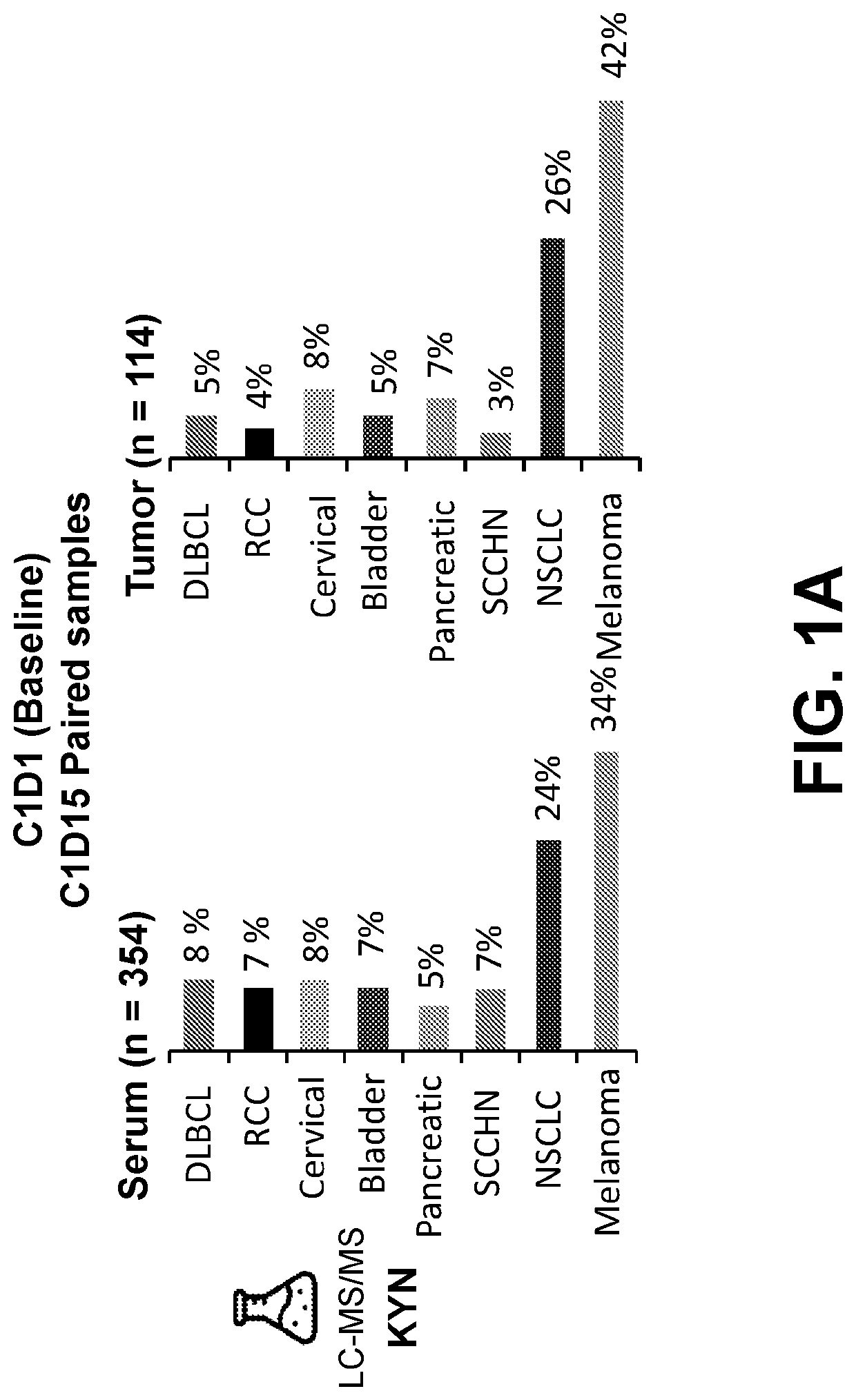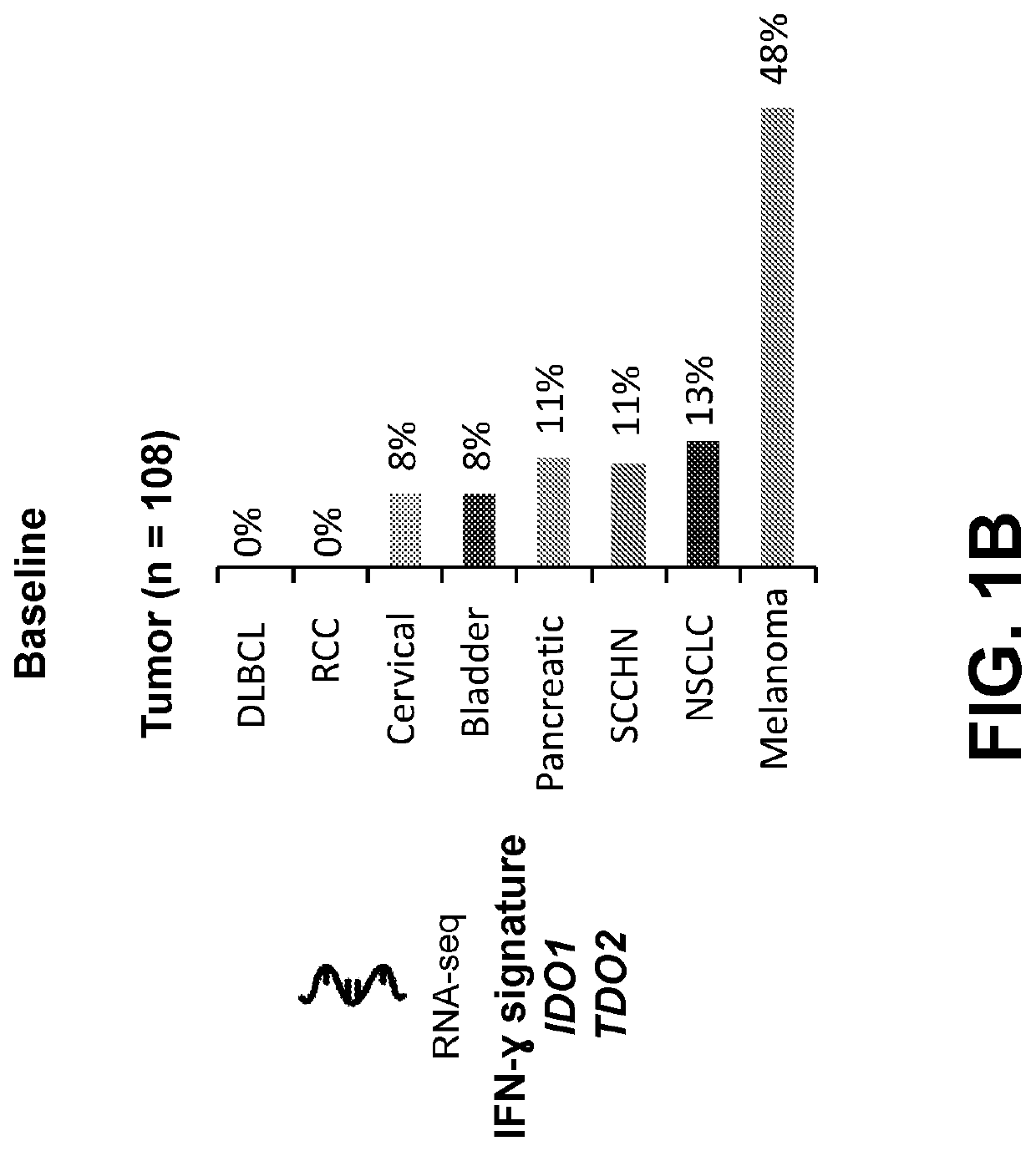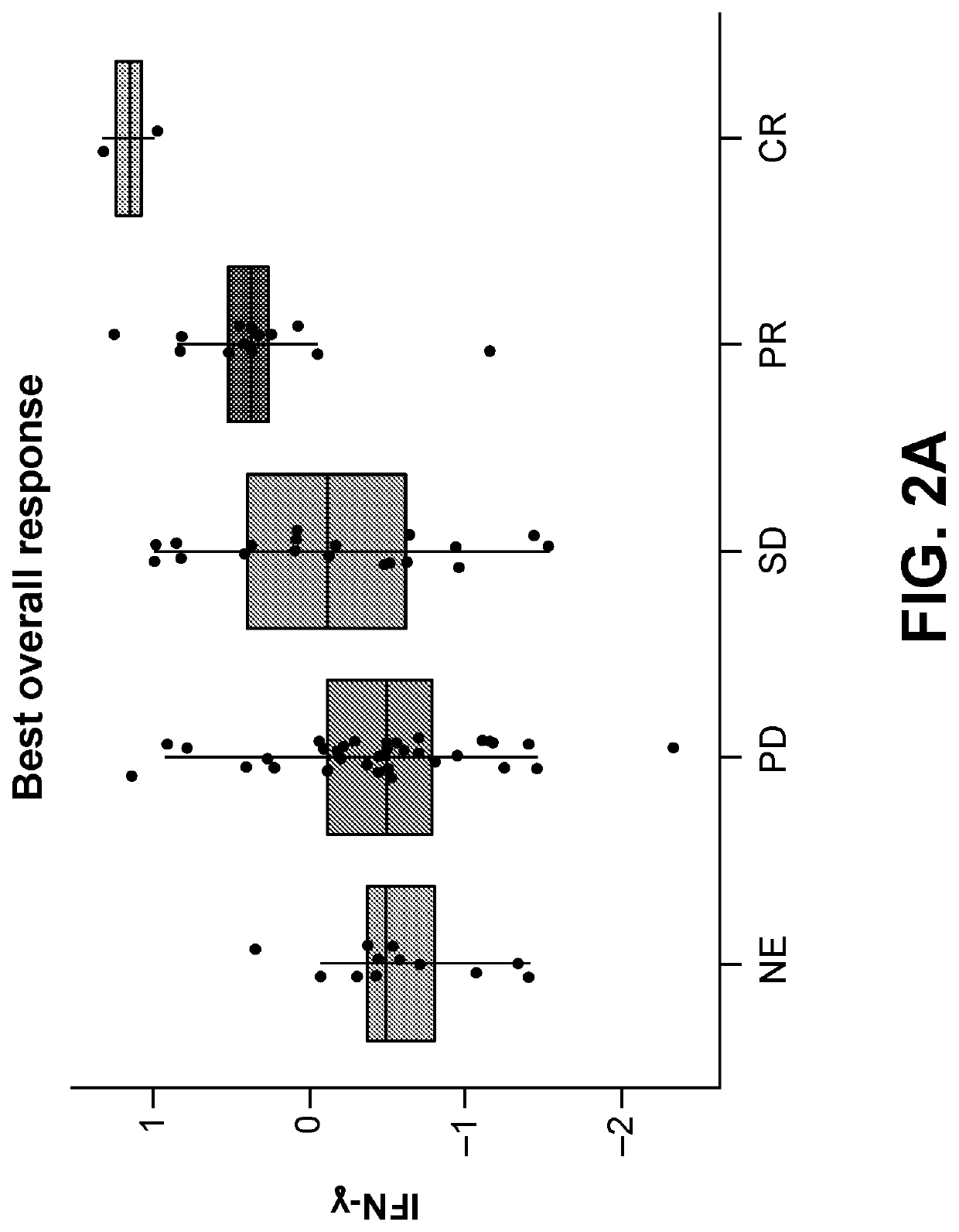Composite biomarker for cancer therapy
a cancer and biomarker technology, applied in the field of cancer therapy, can solve the problems of complex immunological system and immunological respons
- Summary
- Abstract
- Description
- Claims
- Application Information
AI Technical Summary
Benefits of technology
Problems solved by technology
Method used
Image
Examples
example 1
Biomarker Samples and Assessments
[0289]A clinical trial was developed to examine the effect of combination therapy with nivolumab and the IDO1 inhibitor linrodostat in patients with advanced tumors (Clinical Trial Identifier NCT02658890).
[0290]Part 1 of the clinical trial involved a dose escalation study in select previously treated advanced tumors. Prior treatment immune checkpoint inhibitors and therapy targeting T-cell co-stimulation was permitted. Patients were treated with 240 mg of nivolumab (intravenous, once every two weeks) and linrodostat was given orally, every day, with varying dosages (25 mg, 50 mg, 100 mg, 200 mg, 400 mg, 600 mg, or 800 mg). Part 2 of the clinical trial involved a dose expansion study. These patients were treated with either nivolumab monotherapy (240 mg, intravenous, once every two weeks) or nivolumab and linrodostat combination therapy (480 mg nivolumab, intravenous, once every four weeks and 100 mg or 200 mg linrodostat, orally, every day).
[0291]Ser...
example 2
Association of IFNγ Signature with Clinical Response
[0292]IFNγ gene signatures that are predictive of the response to PD-1 checkpoint blockade in melanoma have previously been established (Ayers et al. J Clin Invest. 2017; 127(8):2930-2940). In this example, the association between the expression of IFNγ signature genes and the clinical response to nivolumab and linrodostat combination therapy was examined. The expression of IFNγ signature genes was quantified by RNA sequencing from formalin-fixed, paraffin embedded solid tumor samples. Clinical response was determined by separating the tumors into five groups: non evaluable (NE), progressive disease (PD), stable disease (SD), partial response (PR), and complete response (CR). Expression of IFN-γ signature genes was associated with an improved clinical response from patients treated with nivolumab and linrodostat (FIG. 2A and FIG. 2B).
example 3
Association of IFN-γ Signature with Progression-Free Survival and Overall Survival
[0293]The association of expression of IFNγ signature genes and survival of patients treated with nivolumab and linrodostat was evaluated. Patients were separated into three groups based on IFNγ signature gene expression: low, medium, or high expression. Patient survival was monitored over 200 day increments up to 600 days. High IFNγ signature was associated with improved progression free survival (FIG. 3A and TABLE 2) and overall survival (FIG. 3B and TABLE 3) in immuno-oncology naïve patients treated with nivolumab and linrodostat.
TABLE 2Number of surviving patients based on progression-free survivalBaseline(Day 0 of Day 200 ofDay 400 ofDay 600 ofTreatment)TreatmentTreatmentTreatmentIFNγ High271531IFNγ Medium26531IFNγ Low26200
TABLE 3Number of surviving patients based on overall survivalBaseline(Day 0 of Day 200 ofDay 400 ofDay 600 ofTreatment)TreatmentTreatmentTreatmentIFNγ High272071IFNγ Medium26104...
PUM
| Property | Measurement | Unit |
|---|---|---|
| body weight | aaaaa | aaaaa |
| body weight | aaaaa | aaaaa |
| body weight | aaaaa | aaaaa |
Abstract
Description
Claims
Application Information
 Login to View More
Login to View More - R&D
- Intellectual Property
- Life Sciences
- Materials
- Tech Scout
- Unparalleled Data Quality
- Higher Quality Content
- 60% Fewer Hallucinations
Browse by: Latest US Patents, China's latest patents, Technical Efficacy Thesaurus, Application Domain, Technology Topic, Popular Technical Reports.
© 2025 PatSnap. All rights reserved.Legal|Privacy policy|Modern Slavery Act Transparency Statement|Sitemap|About US| Contact US: help@patsnap.com



